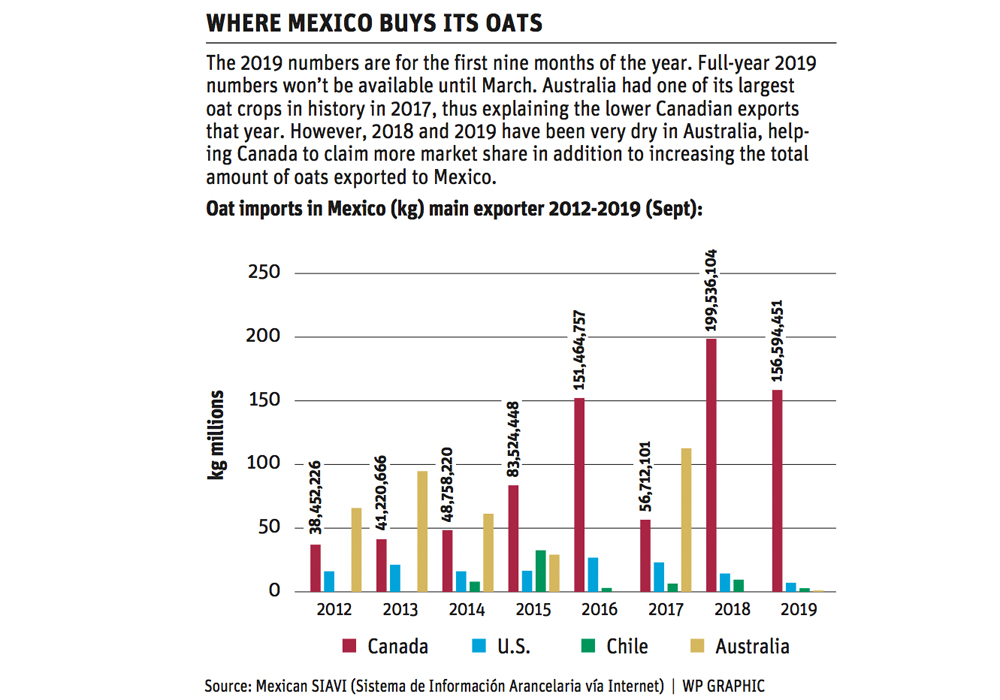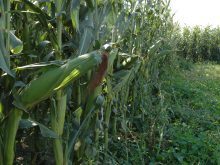The Canadian oat industry says its success in Mexico is the result of social media campaigns and cooking contests
Canadian oats continue to make a big splash in Mexico.
Alan Butuk, chair of the Saskatchewan Oat Development Commission (SaskOats), said Mexican imports of Canadian-grown oats have the potential to exceed 200,000 tonnes in 2019.
That’s a remarkable number, considering annual exports just a few years earlier were lingering in the 40,000 tonne range.
Butuk said a market development campaign launched a few years ago by the Prairie Oat Growers Association has helped Canadian oats gain traction in Mexico, a nearby market of almost 130 million people.
Read Also

Growing garlic by the thousands in Manitoba
Grower holds a planting party day every fall as a crowd gathers to help put 28,000 plants, and sometimes more, into theground
“The lion’s share of our growth there has been the spin-off of our social media campaigns and cooking contests,” said Butuk, an oat producer from Insinger, Sask.
“We’ve worked closely with Emerging Ag, the Canadian consulate in Mexico and with Grupo Vida, potentially one of the largest oat processors in the world….
“Through several missions down there and the exchange of information back and forth, we’ve seen that growth so far jump from around 84,000 tonnes in 2015, up to potentially more than 200,000 tonnes in this last shipping season.”
The POGA-funded market development campaign was launched in 2015 and has been paying dividends ever since.
At the time, Canada’s annual oat exports to Mexico were around 42,000 tonnes.
By comparison, Mexican oat imports from the United States were around 20,000 tonnes and imports from Australia exceeded 90,000 tonnes annually.
In 2014, a promotional website called avenacanada.com came online, offering Mexican visitors information about the nutritional properties of oats as well as customized oat recipes that included local Mexican ingredients.
Within three years, more than 1,700 people were visiting the website every day. Similar information on Facebook was reaching more than five million people a month.
Recipe contests played a key role in the success of the campaign. The contests, aimed at Mexican consumers, challenged participants to submit recipes that used oats or oat ingredients in popular food such as tamales, quesadillas, lasagna, ice cream and pizza.
Canadian oats were also on display at tasting campaigns and a diabetes awareness expo in Mexico City, hosted by the Mexican Diabetes Federation.
At that event, POGA partnered with Mexican oat processor Grupo Vida to distribute free oat samples.
Butuk said SaskOats and POGA are anticipating continued export growth in the Mexican market, although he declined to say how large the Canadian export program could get.
Within four years of the Mexican campaign being launched, Australia, once the largest supplier of oats to the Mexican market, saw its export program to Mexico drop to nearly zero.
“We don’t have a solid number on (the potential for additional growth) but it isn’t stopping any time soon,” said Butuk.
“We’re now seeing investment from (Mexican oat) millers back into Canada so the fact that they’re looking at long-term investments on this side of the border in milling capacity tells us that they see Canada as more than an accessible place to buy oats for the time being.…
“They’re obviously making long-term investments to secure their supply. I think the growth potential is good, but to put a solid number on it right now, I don’t think I could.”
Butuk said market development work will be key to supporting domestic oat production and prices.
Encouraged by the success of the Mexican campaign, prairie oat commissions recently launched a similar campaign in China, which is the second largest importer of oats globally.
Butuk said the Chinese campaign ran into some hurdles about six to 12 months after it was launched.
After reassessing the effort, the commissions decided to focus instead on the Japanese market.
“We just didn’t feel that the investment was going to (produce the intended results), given the dollars that were going to need to be spent in China,” Butuk said.
“We’re now taking those dollars and we’re going to repurpose them into the Japanese market, and we’re also working on the Indian market as well.”
Butuk said it will take some time to build the necessary relationships in Japan and India, but SaskOats directors are confident that Canadian oat exports to those countries will increase over time.
“We feel that if we can duplicate some of the success that we’ve had in Mexico, then that’s going to mean extra export opportunities for Canadian oats,” he said.
Butuk said improved oat genetics and improved production practices in Canada highlight the need for continued market development work.
“Our varieties have come a long way in the last decade or so … and now that we’re growing oats well and producing consistently good yields, we have to be able to find a home for our production.”


















